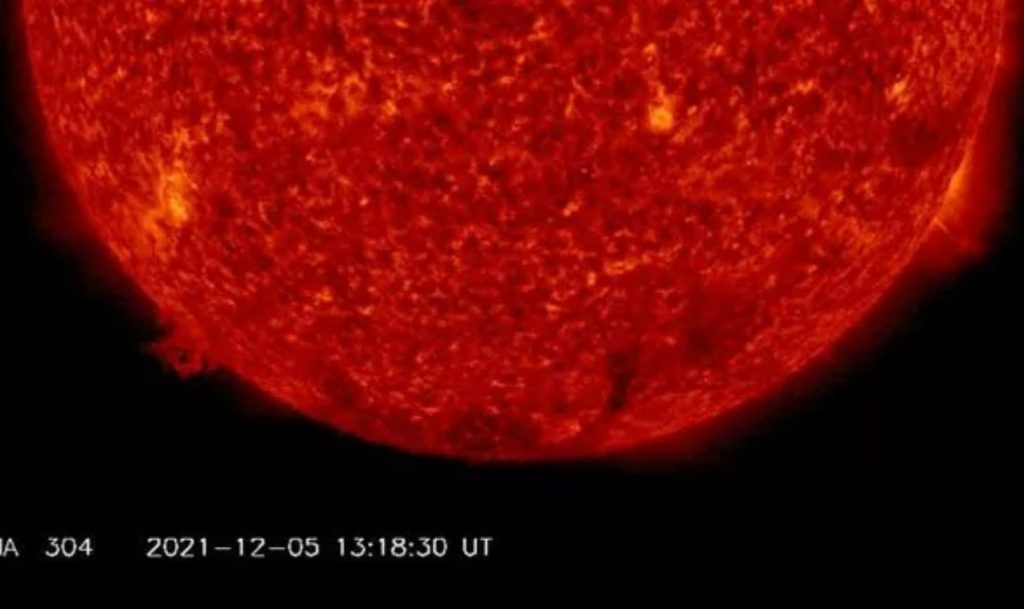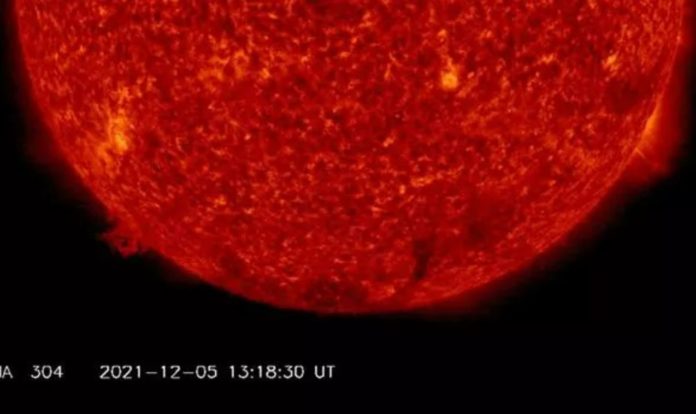Forecasters of space weather have predicted a huge eruption on the Sun’s southern hemisphere during the weekend. Solar monitoring satellites captured footage of a massive magnetic filament erupting from the star, ejecting a cloud of debris into space.
Filaments, also called solar prominences, are huge concentrations of plasma – a soup of free-flowing charged particles – that are cooler and denser than the surrounding solar atmosphere.
When these filaments become unstable, they can explode, hurling a snake-like flood of material into space.
According to NASA: “Prominences are anchored to the Sun’s surface in the photosphere, and extend outwards into the Sun’s hot outer atmosphere, called the corona.
“A prominence forms over timescales of about a day, and stable prominences may persist in the corona for several months, looping hundreds of thousands of miles into space.
“Scientists are still researching how and why prominences are formed.”

According to the website SpaceWeather.com, one such filament burst from the Sun on Sunday.
Because erupting filaments are related to the discharge of charged material and coronal mass ejections (CMEs), they can occasionally produce geomagnetic instability (solar storms) in the Earth’s magnetosphere.
Earlier this month, an erupting solar filament was related to an escaping CME, which space weather analysts predicted was set to impact the planet.
Solar storms, depending on their strength, can impair satellite operations, disrupt communications, and even cause major power outages.

Experts at the US National Oceanic and Atmospheric Administration (NOAA) are now following the material that came out of the Sun on Sunday.
And the good news is that the cloud of debris will most likely not hit our world.
Space Weather reported on Monday: “Yesterday, December 5, a magnetic filament in the Sun’s southern hemisphere exploded.
“The swirling debris will probably sail well south of our planet.
“NOAA analysts are running computer models now to confirm the miss. Stay tuned.”
US Space Weather Prediction Center, part of NOAA, doesn’t think there will be any geomagnetic unrest on Monday or Tuesday night.
The official three-day forecast reads: “No G1 (Minor) or greater geomagnetic storms are expected.
“No significant transient or recurrent solar wind features are forecast.”
In 2013, NASA satellites saw an erupting filament that was 200,000 miles long.
It is estimated to be about 25,000 miles around the Earth.
If you look at the Sun’s corona, you’ll see a spectacular “canyon of fire” when the filament burst.
NASA said: “In reality, the sun is not made of fire, but of something called plasma: particles so hot that their electrons have boiled off, creating a charged gas that is interwoven with magnetic fields.”
Image Credit:
You were reading: A large magnetic filament lashing out from the sun will miss our planet this week
